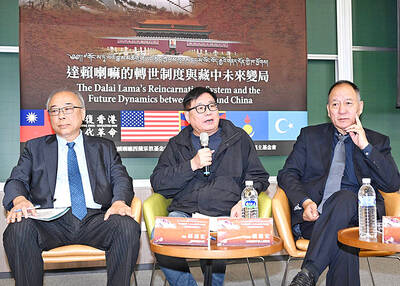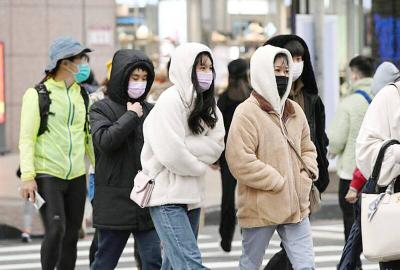A plan to provide mobile phone users a rainfall forecast service through their carriers is in the works, the Central Weather Bureau (CWB) said.
Bureau director Shin Tzay-chyn (辛在勤) said the CWB, the Water Resources Agency and the Council of Agriculture’s Soil and Water Conservation Bureau have spent seven years jointly developing a system of quantitative precipitation estimation and segregation using multiple sensors (QPESUMS).
The QPESUMS system is capable of providing rainfall forecast an hour before the precipitation falls and it is done mainly using radar and satellite systems, he said.
“Through the observations, we are able to monitor convections and rain belts that are developing and estimate the potential location and amount of rainfall,” Shin said.
Shin said that in the past, the CWB could give rainfall forecasts based on the reports from its observation centers. However, it could only provide a rough estimate for areas outside the observation ranges.
The bureau can now give a more accurate forecast because it can detect rain falling on a grid in a satellite map, which represents a 1km² area, he said.
Shin said the complete statistics collected from QPESUMS are used by emergency rescue agencies so they can quickly take the necessary measures to prevent disasters if extremely heavy rain continues for an hour.
Shin said that part of the information was available at the bureau’s Web site and some mountain climbers have begun to use it to plan trips. The bureau is planning to allow the public to access the information by working with telecoms carriers.
“Say we have seen rain clouds moving from [Taipei County’s] Tucheng (土城) to [Taipei City’s] Muzha (木柵), the telecoms carriers can send text messages to their customers in Muzha if there is going to be heavy rainfall,” Shin said.

ALIGNED THINKING: Taiwan and Japan have a mutual interest in trade, culture and engineering, and can work together for stability, Cho Jung-tai said Taiwan and Japan are two like-minded countries willing to work together to form a “safety barrier” in the Indo-Pacific region, Premier Cho Jung-tai (卓榮泰) yesterday said at the opening ceremony of the 35th Taiwan-Japan Modern Engineering and Technology Symposium in Taipei. Taiwan and Japan are close geographically and closer emotionally, he added. Citing the overflowing of a barrier lake in the Mataian River (馬太鞍溪) in September, Cho said the submersible water level sensors given by Japan during the disaster helped Taiwan monitor the lake’s water levels more accurately. Japan also provided a lot of vaccines early in the outbreak of the COVID-19 pandemic,

Kaohsiung Mayor Chen Chi-mai (陳其邁) on Monday announced light shows and themed traffic lights to welcome fans of South Korean pop group Twice to the port city. The group is to play Kaohsiung on Saturday as part of its “This Is For” world tour. It would be the group’s first performance in Taiwan since its debut 10 years ago. The all-female group consists of five South Koreans, three Japanese and Tainan’s Chou Tzu-yu (周子瑜), the first Taiwan-born and raised member of a South Korean girl group. To promote the group’s arrival, the city has been holding a series of events, including a pop-up

TEMPORAL/SPIRITUAL: Beijing’s claim that the next Buddhist leader must come from China is a heavy-handed political maneuver that will fall flat-faced, experts said China’s requirement that the Dalai Lama’s reincarnation to be born in China and approved by Beijing has drawn criticism, with experts at a forum in Taipei yesterday saying that if Beijing were to put forth its own Dalai Lama, the person would not be recognized by the Tibetan Buddhist community. The experts made a remarks at the two-day forum hosted by the Tibet Religious Foundation of His Holiness the Dalai Lama titled: “The Snow Land Forum: Finding Common Ground on Tibet.” China says it has the right to determine the Dalai Lama’s reincarnation, as it claims sovereignty over Tibet since ancient times,

Temperatures in some parts of Taiwan are expected to fall sharply to lows of 15°C later this week as seasonal northeasterly winds strengthen, the Central Weather Administration (CWA) said today. It is to be the strongest cold wave to affect northern Taiwan this autumn, while Chiayi County in the southwest and some parts of central Taiwan are likely to also see lower temperatures due to radiational cooling, which occurs under conditions of clear skies, light winds and dry weather, the CWA said. Across Taiwan, temperatures are to fall gradually this week, dropping to 15°C to 16°C in the early hours of Wednesday